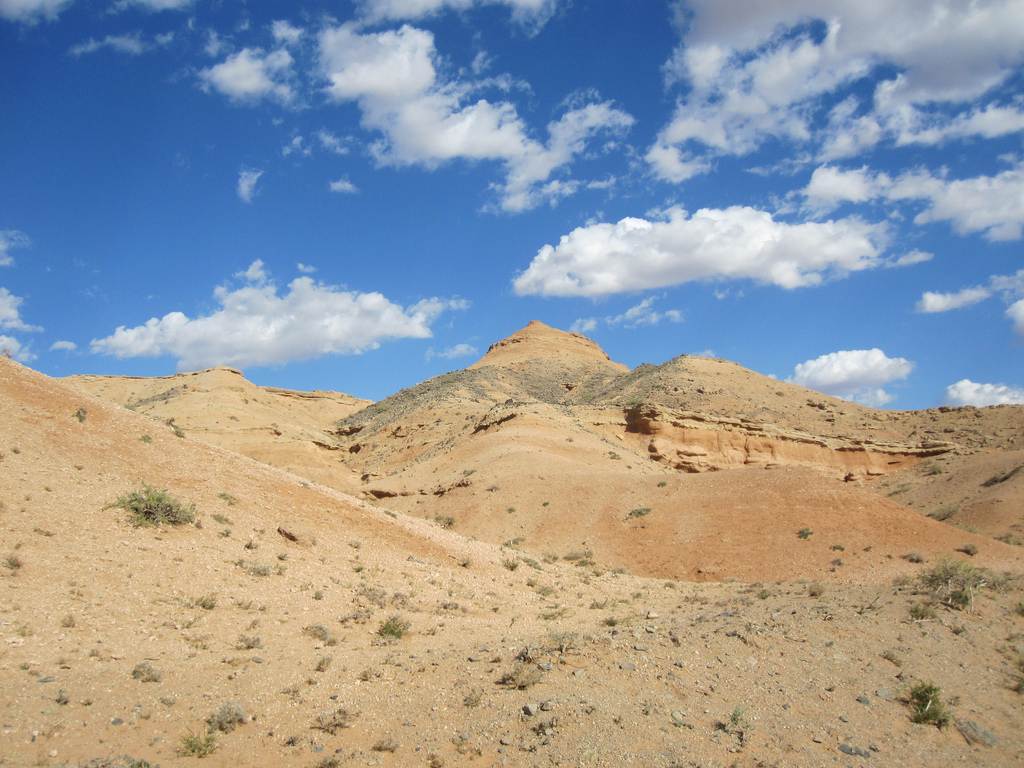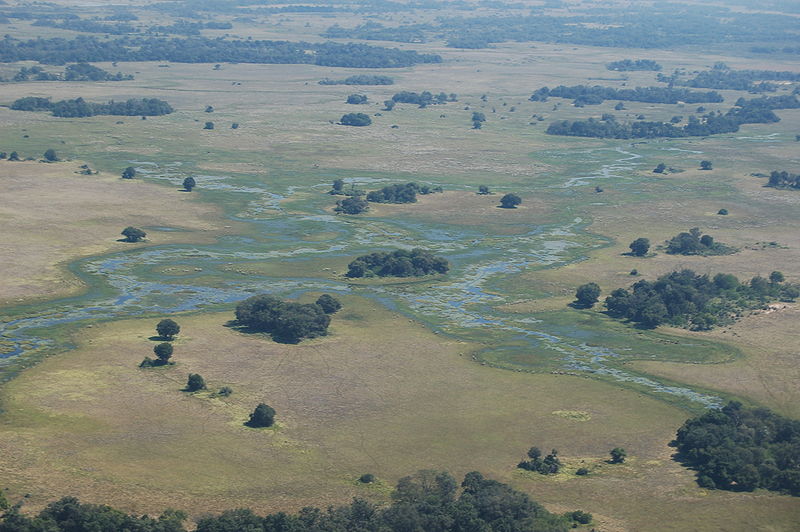7 December 2011
Dino eggshells crack the case of a Cretaceous environment
Posted by kramsayer

The Gobi Desert in Mongolia. The arid hills are rich in fossils from the Cretaceous period. (Credit: Shaena Montanari)
Though long-gone, dinosaurs can help paint a picture of what the environment was like more than 65 million years ago. Oxygen and carbon from the food they ate and the water they drank left telltale signatures in their teeth and eggshells.
These days, the arid landscape of the Gobi Desert in Mongolia only supports small lizards, mammals and the elusive Marco Polo sheep. But in the late Cretaceous period, it was a warmer, wetter place – home to dinosaurs including oviraptors and protoceratops.
“There must have been enough water to support larger creatures,” said Shaena Montanari, a comparative biology student at the Richard Gilder Graduate School at the American Museum of Natural History in New York City. Montanari presented a poster Monday afternoon about dinosaur eggshell geochemistry during the American Geophysical Union’s Fall Meeting.
Montanari looked to different forms of oxygen, called isotopes, to tell her about the water present at Ukhaa Tolgod. There, dinosaurs drank from pools of water subject to evaporation. Water with lighter oxygen isotopes evaporates first, leaving heavier water molecules behind. So smaller pools of water would be more heavy-isotope rich than larger pools. And a dinosaur sipping from different sized pools would reveal this variety through the chemical composition of their eggshells.
The eggshell fossils support the idea that the environment at the Cretaceous site was similar to today’s Okavango Delta at the edge of the Namib Desert in Botswana, Montanari says. The Okavango Delta is the largest inland river delta; seasonal flooding produces a verdant swamp in the otherwise arid region.
Montanari also looked to the carbon isotopes to reveal the dinosaurs’ diets. They seem to have munched on plants that tolerate arid environments, such as conifers.
Geologists already know that the Ukhaa Tolgod, Mongolian for “brown hills,” had large sand dunes thanks to the distinctive patterns in the rocks. But those ancient dunes could have been treacherous.
“You can tell that the dunes were stabilized when plants were growing on them,” Montanari says. “But when it got wet, you had part of the dune just slide down.” One of the most famous fossil finds from the Gobi desert is an oviraptor sitting on a nest of eggs, buried suddenly by a sand slide.
Fortunate for us, but perhaps not for future fossil-hunters, Montanari says, “There are not a lot of places where that happens now.”
-Marissa Fessenden is a science communication graduate student at UC Santa Cruz



 GeoSpace is a blog on Earth and space science, managed by AGU’s Public Information staff. The blog features posts by AGU writers and guest contributors on all sorts of relevant science topics, but with a focus on new research and geo and space sciences-related stories that are currently in the news.
GeoSpace is a blog on Earth and space science, managed by AGU’s Public Information staff. The blog features posts by AGU writers and guest contributors on all sorts of relevant science topics, but with a focus on new research and geo and space sciences-related stories that are currently in the news.
[…] Dino eggshells crack the case of a Cretaceous environment | Geospace […]
[…] Dino eggshells crack the case of a Cretaceous environment: “Though long-gone, dinosaurs can help paint a picture of what the environment was like more than 65 million years ago. Oxygen and carbon from the food they ate and the water they drank left telltale signatures in their teeth and eggshells. […]
[…] small herds of dinosaurs eking out an existence around gradually evaporating ponds refreshed by seasonal flooding. Seasonal clouds still hung in the air as the velociraptor navigated the now treacherously sodden […]